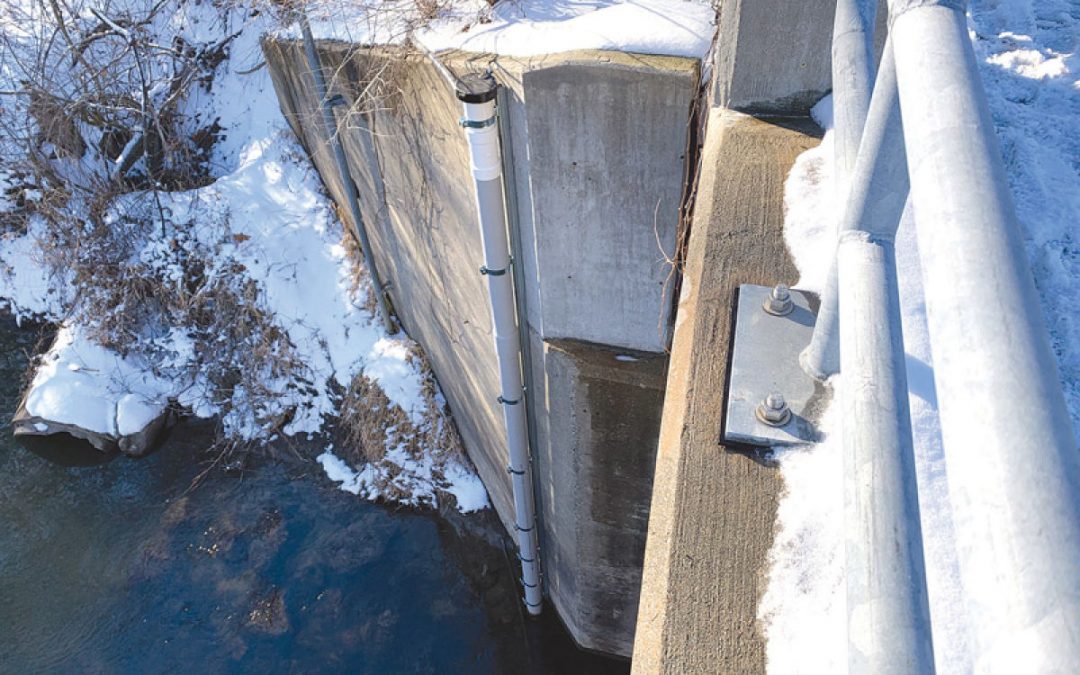CLINTON TOWNSHIP — The Clinton River is one of three southeastern Michigan rivers being studied to help improve water quality and wastewater treatment in the region.
It is part of the Great Lakes Water Authority’s “Regional River Water Quality Monitoring Program,” with local impacts in communities such as Clinton Township and Sterling Heights — both of which already have gauges that monitor the height and flow of water but will now be enhanced with new sensors.
The GLWA program is part of a broader regional wastewater master plan announced Dec. 10, 2020, developed with 100 stakeholders’ input. The 40-year plan, according to the GLWA, “prioritizes lower-cost, high-impact projects that protect water quality, public health, contribute to economic prosperity and preserve the environment.”
The GLWA wastewaters system services approximately 2.8 million people and spans 15,000 miles of pipes across 79 communities in southeast Michigan. Wastewater flows throughout 86 separate municipal systems in the area and is treated at North America’s largest single-site wastewater treatment facility.
GLWAs Regional River Water Quality Monitoring Program is just one piece of a larger puzzle that includes partnerships with the Michigan Department of Transportation and Detroit Water and Sewerage Department, which is working on freeway water drainage and treatment on Interstates 94 and 375, prior to reaching the Detroit River. That partnership will also affect the proposed Gordie Howe International Bridge, GLWA stated.
“The Wastewater Master Plan is a true demonstration of the spirit of regional collaboration on which GLWA was established,” said GLWA CEO Sue F. McCormick in a press release. “Pipes don’t know where one community ends and another begins.
“This new plan is specifically designed to optimize the wastewater system based on need at the lowest cost for the region, as opposed to an individual-system approach. It offers us tremendous opportunity to leverage the infrastructure the region has invested in to-date and identify future investments and improvements that will continue to advance water quality in the region for decades to come.”
The three steps of the GLWA’s master plan involve optimization, adaptation and expansion, and sustainment.
“As part of GLWA’s new master plan, Macomb County has pushed for a regional approach to improving water quality in our lakes, rivers and streams,” Macomb County Public Works Office Commissioner Candice Miller said in a statement. “The data will help determine where maintenance and upgrades in our wastewater systems are needed in order to improve water quality and allow for healthy recreation on our lakes and rivers.”
Flow monitoring is integral for assessing flood and water quality conditions and how water flows off land. In Sterling Heights, for example, a tube was recently installed in the Clinton River to protect reading instruments for continuous water quality readings.
These additions are expected to aid stakeholders, such as the myriad communities and watershed advocacy groups part of the GLWA master plan that aims to protect waterways by way of limiting combined sewer overflows and sanitary sewer discharge. Other initiatives include separating storm sewers from sanitary sewage flow, and nurturing green infrastructure.
“Much like finding the sources of illicit sewage connections and discharges, responding to fuel spills, removing logjams and other ways we strive to protect our waterways, monitoring the health of the Clinton River is one of several contributing factors when our office points out that water quality and quality of life go hand in hand,” Miller said.
Miller has experience with such sensors, as she helped secure funding for the purchase and installation of them in 2006 at seven locations along the St. Clair River, and two valves in Lake St. Clair near Mount Clemens and New Baltimore. The sensors sampled water every 15 minutes to check for 27 different chemical contaminants.
MCPWO maintains that Clinton River water quality is “good,” citing how the Michigan Department of Natural Resources caught 1,038 fish in one day in one river spot last July — a catch that netted 25 different species, including “pollution intolerant” fish like darters and stonecat.
“That was excellent and important news, as well,” she said. “(It was) important because stormwater from hundreds of drains flows into the Clinton River and eventually to Lake St. Clair, known for its popularity with fishermen, boaters and other water recreation enthusiasts. Still, all of us are environmental stakeholders, and we must remain vigilant in protecting our waterways.”
MCPWO Spokesperson Norb Franz said Feb. 2 that GLWA awarded the monitoring contract to the U.S. Geological Survey, adding that the water quality sensors were not yet procured. It is “uncertain” how soon they will actually be installed.
This article appeared in the C&G News, for more, click here.

